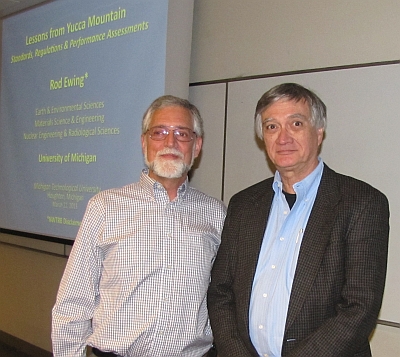Applicant criteria: must be a Michigan resident; must demonstrate financial need; must have a minimum 2.5 GPA (calculated on a 4.00 scale); must be a full-time student in good standing at a postsecondary, accredited Michigan “Educational Institution” at the time the award is paid (an “Educational Institution” is an organization that normally maintains regular faculty and curriculum and has a regularly enrolled student body in attendance); must be enrolled in a course of study which will allow for full time employment in the crude oil and natural gas industry. Renewable for up to 3 years or until a Bachelor’s Degree is earned, whichever occurs first) DEADLINE IS JULY 15th see attached application form.
This time last year, the finishing touches were just being put on Michigan Technological University’s Great Lakes Research Center (GLRC). Researchers were starting to move in, and plans were being made for a mid-summer building dedication.
What a difference a year makes. Now celebrating its first anniversary, the GLRC is fast becoming the go-to source for data about the Great Lakes and the home of pioneering investigations into solutions to the challenges facing them.
“This is a unique, amazing place,” says Guy Meadows, director of the GLRC. Meadows came to Michigan Tech from the University of Michigan to lead the Great Lakes research efforts here. “Scientists from all across the basin have their eyes on us. The future of Great Lakes research is based right here.”
MORE
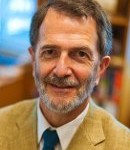 Wayne Pennington, chair of the Department of Geological and Mining Engineering and Sciences, has been named interim dean of the College of Engineering, effective May 13. His appointment is expected to end June 30, 2014, or until the search for the next dean is concluded and the dean appointed.
Wayne Pennington, chair of the Department of Geological and Mining Engineering and Sciences, has been named interim dean of the College of Engineering, effective May 13. His appointment is expected to end June 30, 2014, or until the search for the next dean is concluded and the dean appointed.
Pennington has been a professor of geophysical engineering at Michigan Tech since 1994 and became GMES department chair in 2003. Prior to coming to the University, he worked with Marathon Oil and was an assistant professor at University of Texas at Austin.
He has held numerous other positions during his career, most recently as a Jefferson Science Fellow at the US Department of State and USAID (Agency for International Development) and as president of the American Geosciences Institute. He was president of the American Geophysical Union Board of Heads and Chairs of earth and space science departments and was first vice president of the Society of Exploration Geophysicists.
During his appointment as a Jefferson Science Fellow, he worked in the Office of Infrastructure and Engineering within the Bureau of Economic Growth, Agriculture and Trade. After USAID’s Office of Science and Technology was created in 2010, he shared his appointment in that office.
Pennington received degrees in geophysics and geology from Princeton University (BA), Cornell University (MS) and the University of Wisconsin-Madison (PhD).
“I am pleased to have Wayne serving in this position,” said Provost Max Seel. “He has the strong support of the engineering department chairs to lead the College and move forward with the strategic plan.”
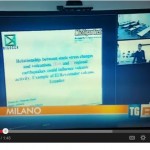 The International Geological Masters in Volcanology and Geotechniques (INVOGE) program was featured on Italian TV news. Links to YouTube videos are provided below. The videos show the MS defense of INVOGE student Daniele Alami, which was conducted via teleconference with Milan on April 12. Daniele’s MS committee consisted of Professor Greg Waite (GMES), Assistant Professor Simon Carn (GMES) and Professor Alessandro Tibaldi from the University of Milan–Bicocca.
The International Geological Masters in Volcanology and Geotechniques (INVOGE) program was featured on Italian TV news. Links to YouTube videos are provided below. The videos show the MS defense of INVOGE student Daniele Alami, which was conducted via teleconference with Milan on April 12. Daniele’s MS committee consisted of Professor Greg Waite (GMES), Assistant Professor Simon Carn (GMES) and Professor Alessandro Tibaldi from the University of Milan–Bicocca.
In an engaging lecture, Tina Behr-Andres will share her experience advising the Federal Government’s Science Team for the Deep Water Horizon BP Oil Spill Response. The presentation, entitled, “Oil Spill Response Experience: Exxon Valdez to BP Deepwater Horizon,” will be held on Tuesday, April 23, from 4 p.m. to 5p.m., Dow 642.
Behr-Andres holds over twenty years of professional experience in engineering academe, private-sector technical consulting and national laboratory research management. She specializes in management of legacy wastes from nuclear weapons production; marine and terrestrial oil spill response; industrial and hazardous waste management and wastewater treatment; and contaminated site remediation. Currently, Behr-Andres is an Executive Advisor to the principal associate director of science, technology and engineering at Los Alamos National Laboratory.
This presentation is sponsored by Los Alamos National Laboratory, the Sustainable Futures Institute, Michigan Tech’s Department of Geological and Mining Engineering and Sciences, and Michigan Tech’s Office for Institutional Diversity.
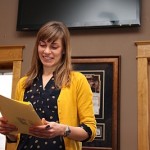 The Department of Geological & Mining Engineering & Sciences
The Department of Geological & Mining Engineering & Sciences
13th Annual Awards Ceremony was held Thursday, April 11, 2013 at the Downtowner Restaurant Hall in Houghton. In addition to graduating seniors and graduate students getting recognition, numerous scholarship awards and special presentations were made by Department Chair Dr. Wayne Pennington.
A selection of photos can be found on the College of Engineering Flickr Resources.
Congratulations to our faculty receiving $5,000 Michigan Space Grants:
*Louisa Kramer (GMES): “Remote sensing of gases in smoke stack plumes”
Graduate students receiving $5,000 fellowship Michigan Space Grants:
*Kathleen McKee (GMES): “Analysis of Temporal Velocity Changes from Seismic Ambient Noise in Volcanic Environments: Source Modeling and Evaluation for Monitoring”
*Lauren Schaefer (GMES): “Application of remote sensing and numerical modeling to volcanic hazard monitoring”
*Emily Gochis (GMES): “Increasing Native American involvement in geosciences through interdisciplinary community-based student investigations”
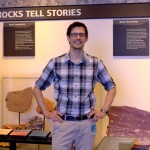 Adam Blankenbicker, a Peace Corps Master’s International alumnus in geology, writes a science education blog called SciEd for the Public Library of Science (PLoS) web site. See SciEd Blog.
Adam Blankenbicker, a Peace Corps Master’s International alumnus in geology, writes a science education blog called SciEd for the Public Library of Science (PLoS) web site. See SciEd Blog.
Adam is an Education Specialist at the Smithsonian Institution, National Museum of Natural History.
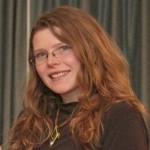 Alex Guth for being selected as Michigan Tech’s representative for the Midwestern Association of Graduate Schools Excellence in Teaching Award. One particular aspect of her teaching innovations that fascinated the selection panel was her work in online education.
Alex Guth for being selected as Michigan Tech’s representative for the Midwestern Association of Graduate Schools Excellence in Teaching Award. One particular aspect of her teaching innovations that fascinated the selection panel was her work in online education.
Wayne D Pennington said “We are honored to have Alex represent Michigan Tech in this competition!”
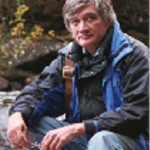 Professor Rodney C. Ewing, Edward H. Kraus Distinguished University Professor
Professor Rodney C. Ewing, Edward H. Kraus Distinguished University Professor
Department of Earth & Environmental Sciences, University of Michigan
‘Lessons from Yucca Mountain Standards, Regulations & Performance Assessments”
Yucca Mountain, Nevada, was scheduled to be a geological repository storage facility for high-level radioactive waste until it was defunded in 2010. This seminar is sponsored by the A. E. Seaman Mineral Museum and hosted by the Department of Geological and Mining Engineering and Sciences. There will be a social after the talk in the Dow sixth-floor atrium (lakeside).
Friday – March 22, 3:00 to 4:00 pm DOW 642; Social to follow in 6th floor atrium, lakeside
